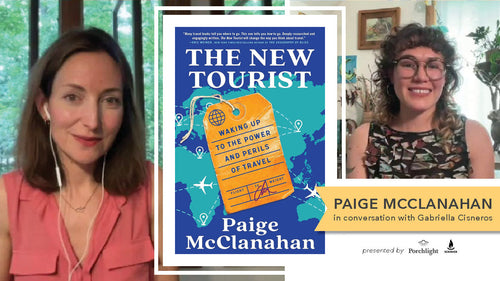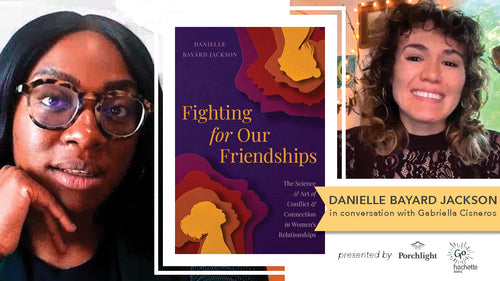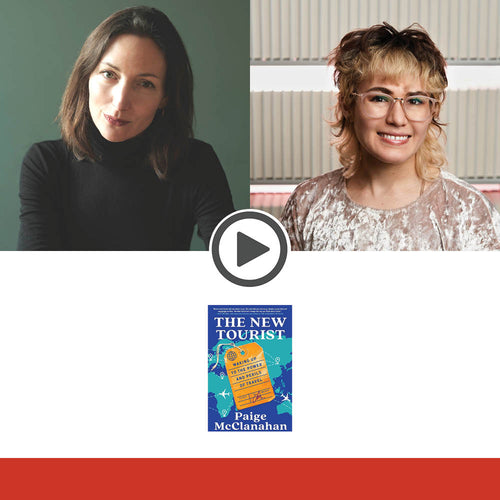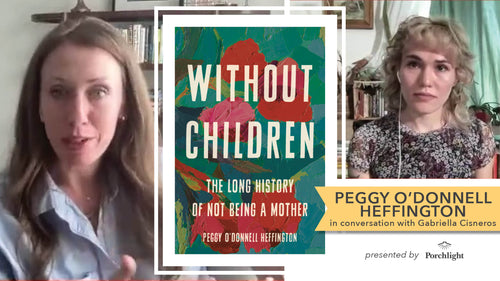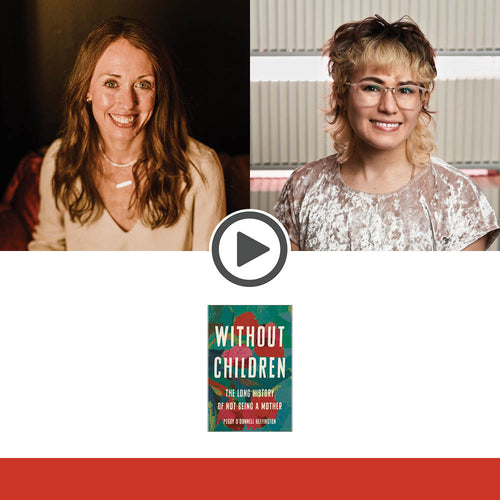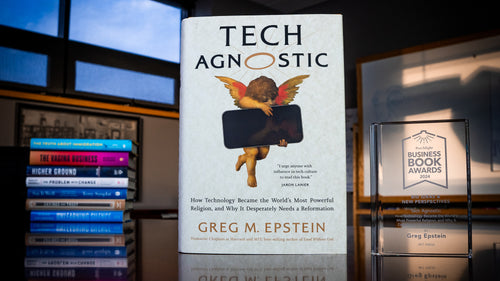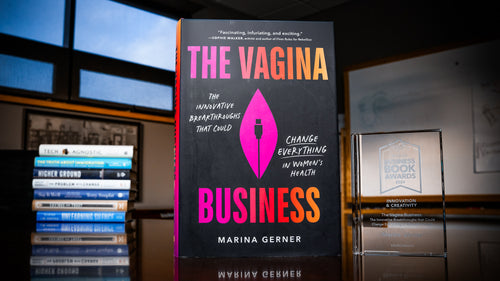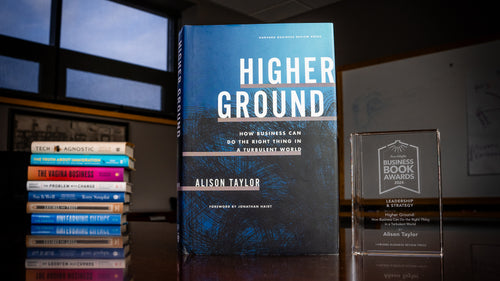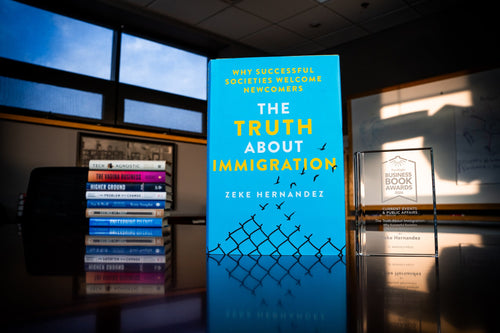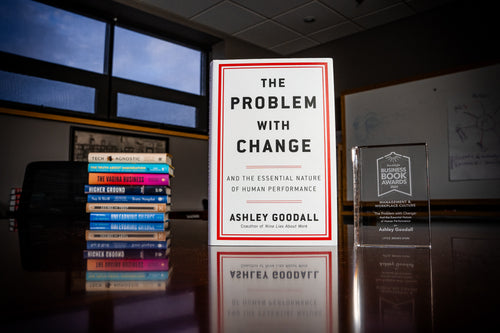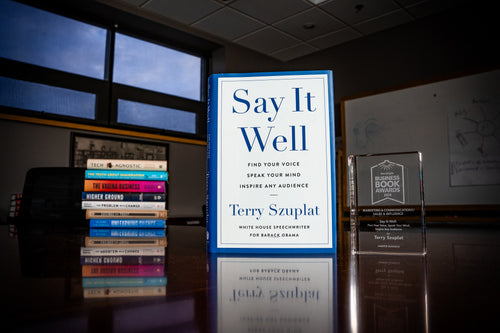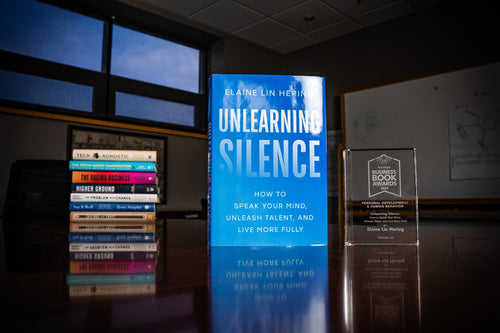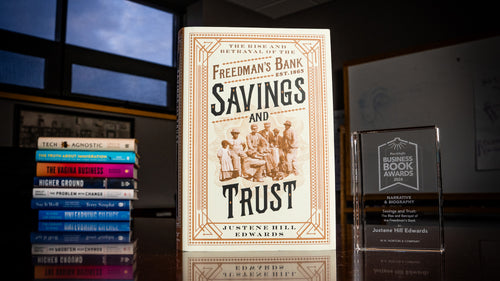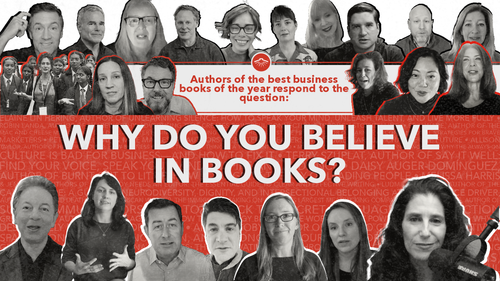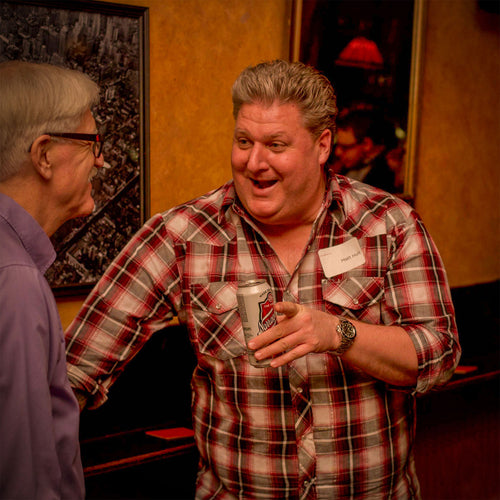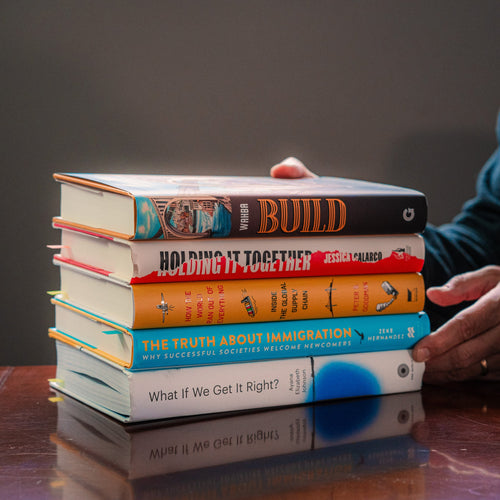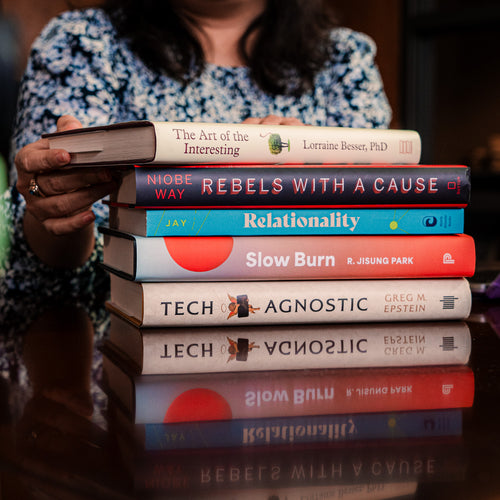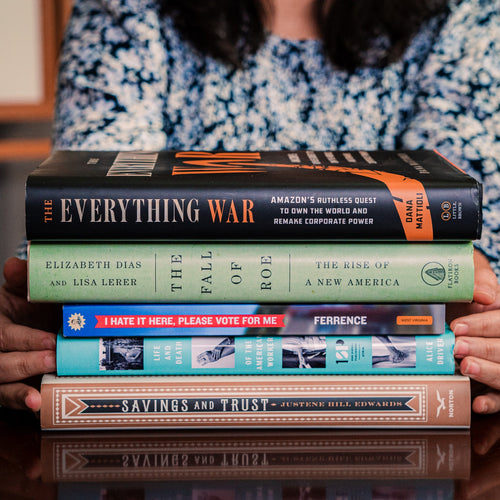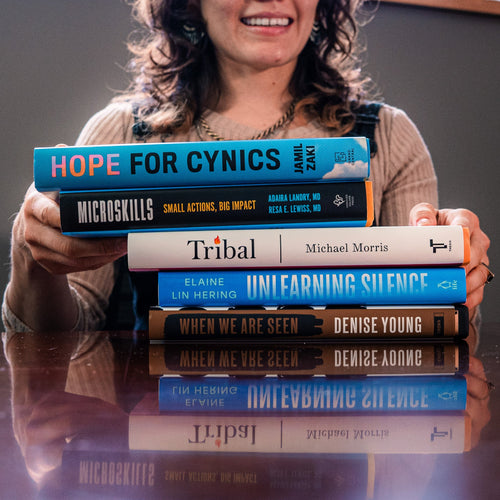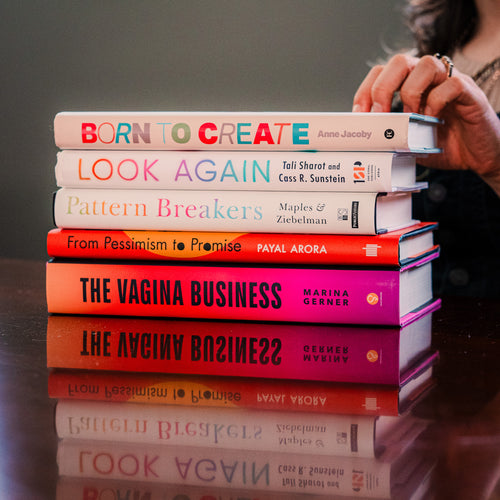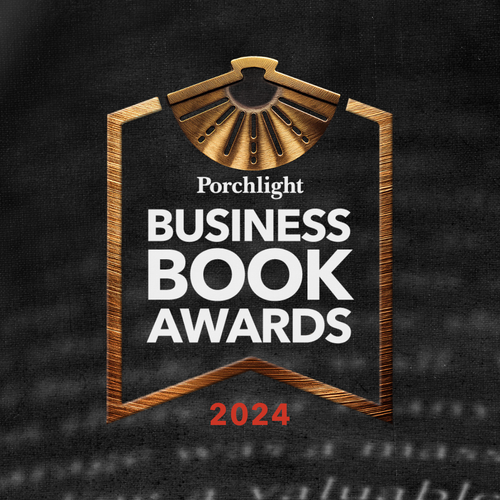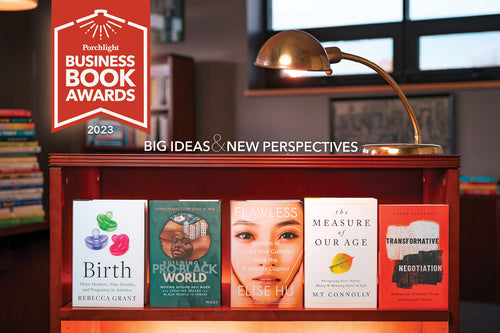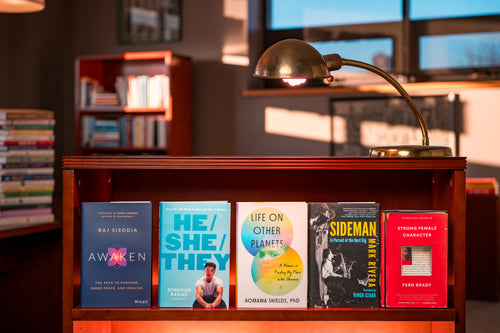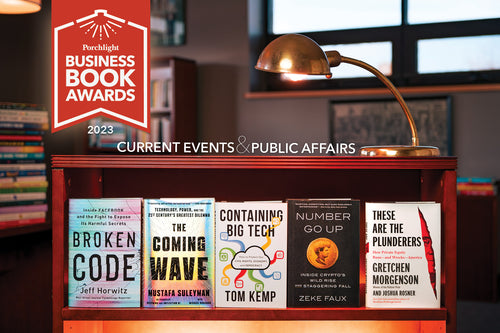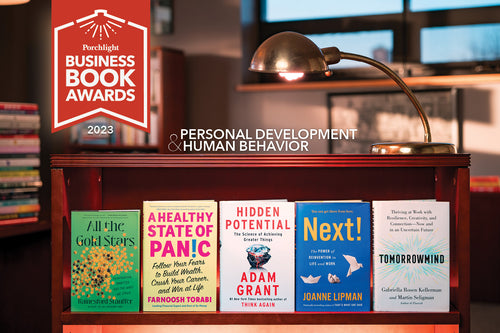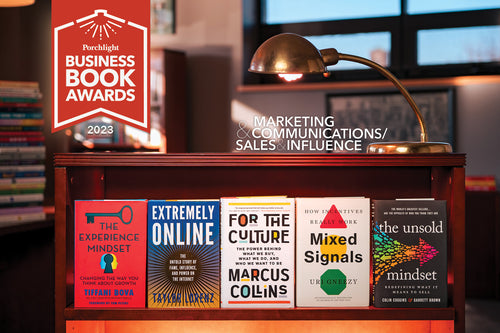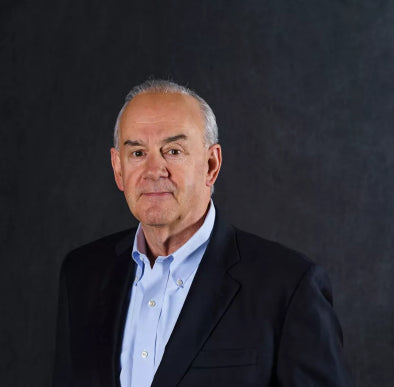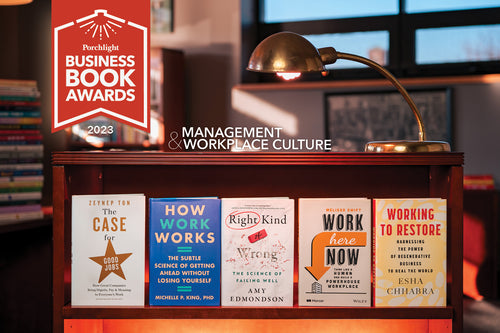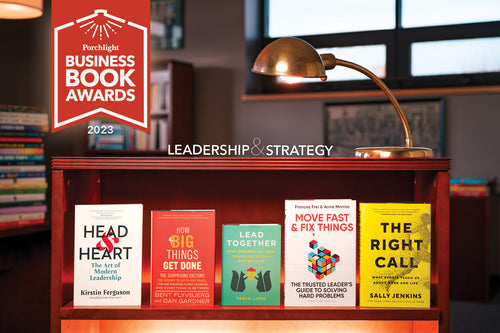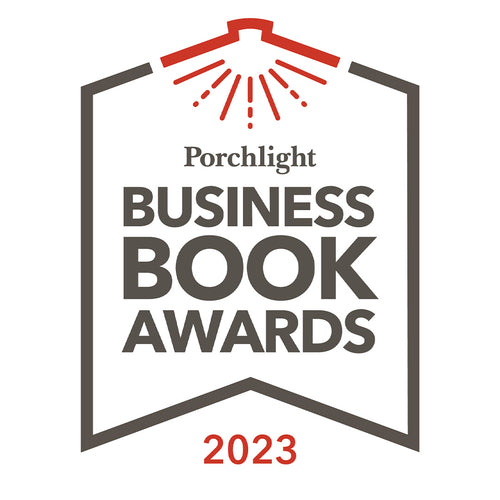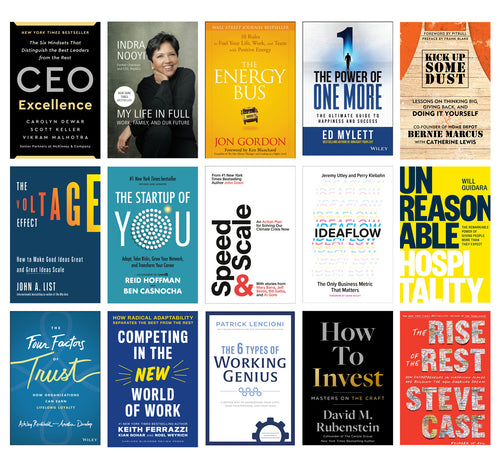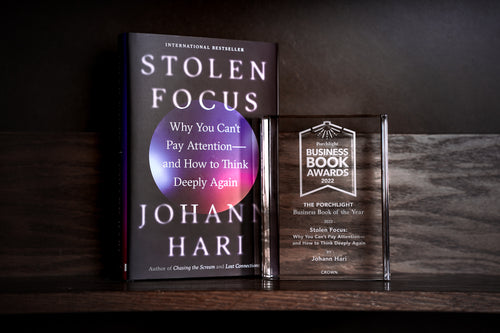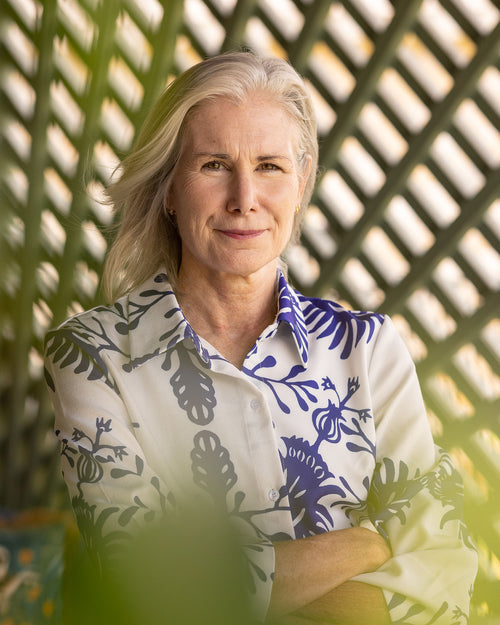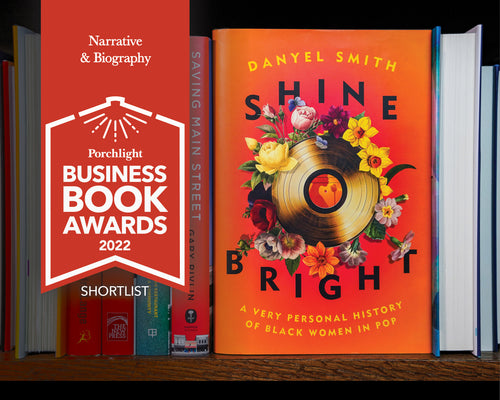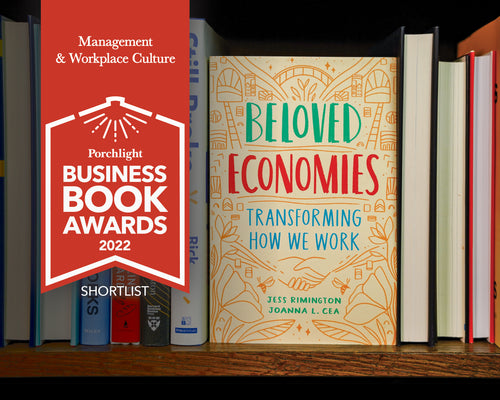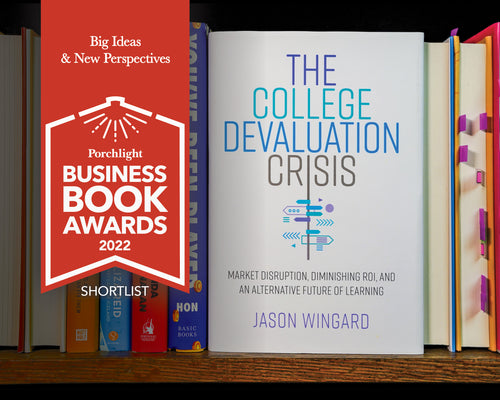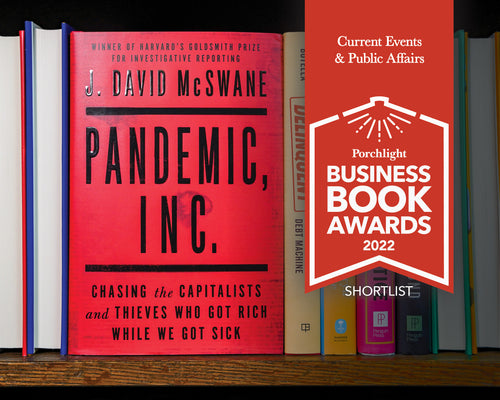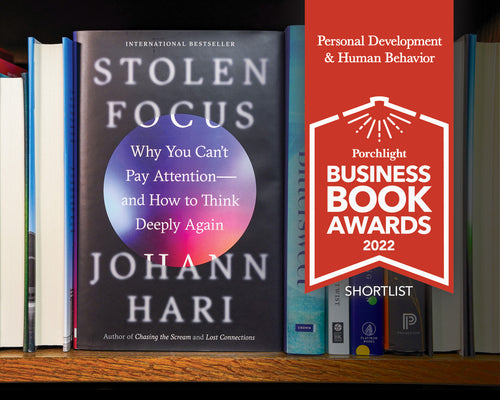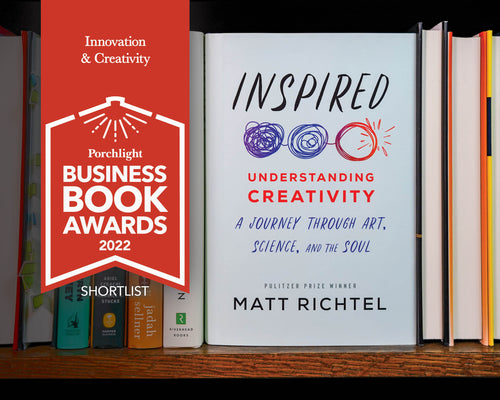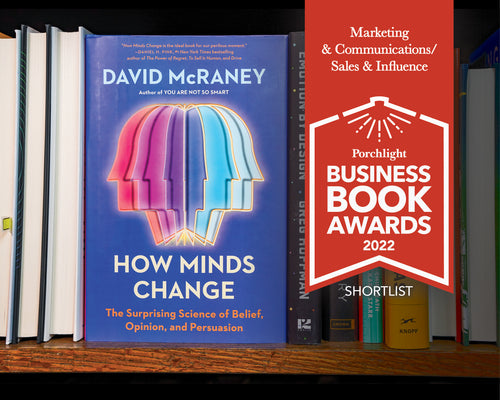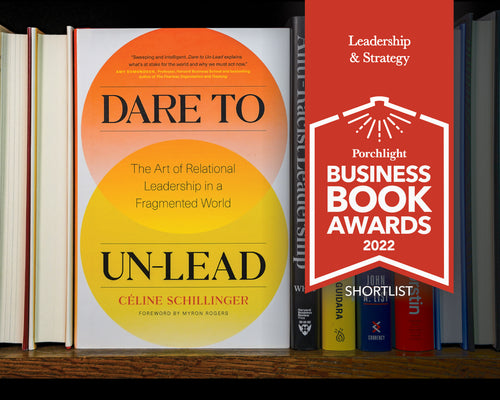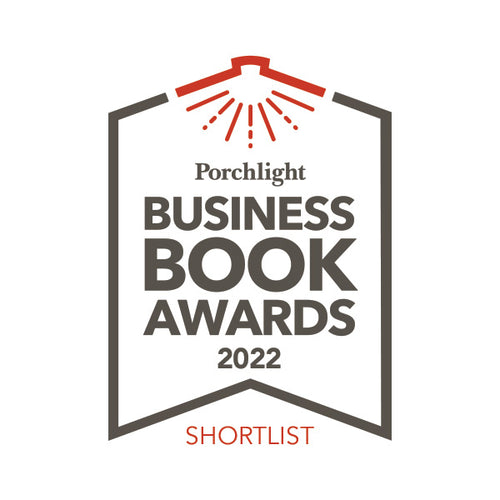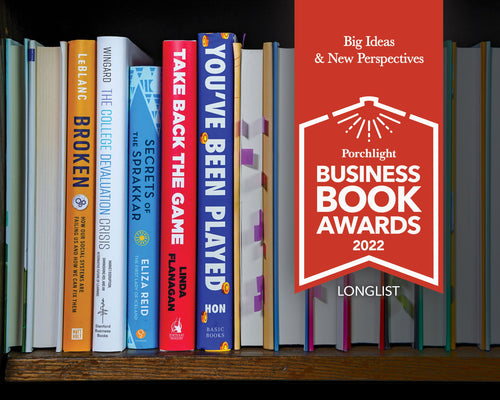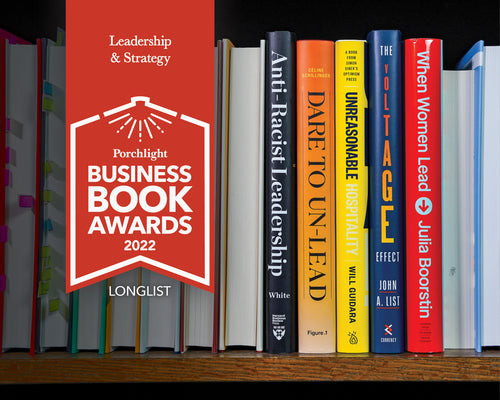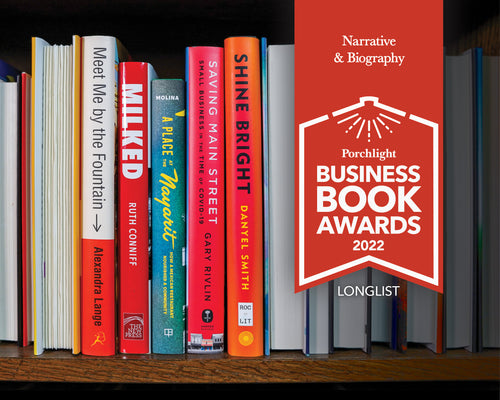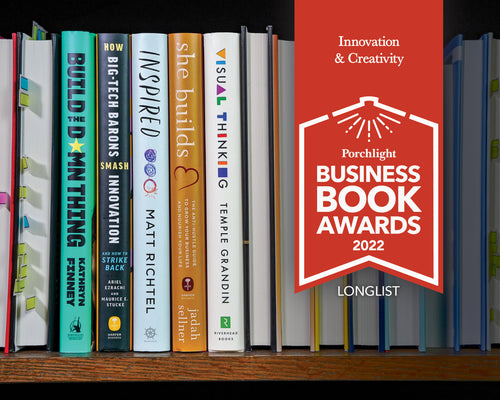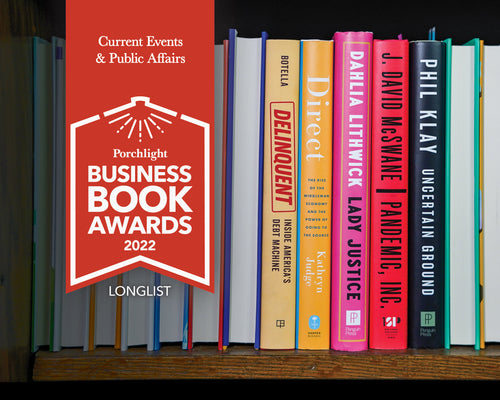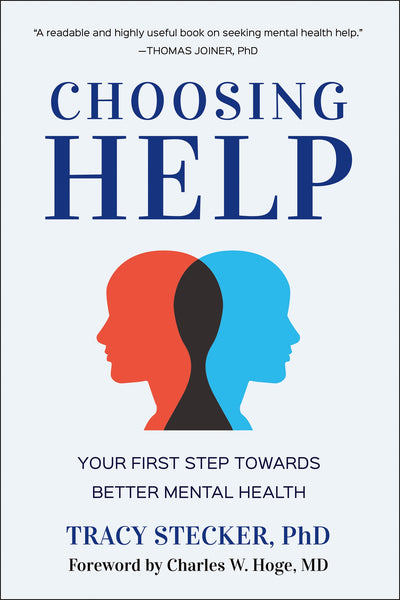The 2023 Porchlight Business Book Awards | Innovation & Creativity
Innovation and creativity is so much more than creating profitable new products, producing social media content, or decorating common areas with inspirational artwork. The best innovation and creativity books of 2023:
-
propose embracing more intuitive or unpredictable approaches to practicing creativity in every area of your life (The Creative Act)
-
highlight resourceful organizations and the tactics they use to problem-solve and improve the world around them (The Four Workarounds)
-
provide plenty of investor insight to redirect innovators’ focus from the business concept to the business plan (The Idea is the Easy Part)
-
commit to cultivating deep curiosity to prepare the ground for more comprehensive empathy (Seek)
-
use neuroscience to understand the many benefits to engaging with all forms of art (Your Brain on Art)
The diversity in the stories of these five books exhibits the spectrum of human life that flourishes only with the inclusion of innovation and creativity.
NOTE: As I was reading each book, I couldn’t help but think about how it is in conversation with others selected as the best business books of the year. I note those under each write in the section “WORKS WELL WITH” in case you want recommendations of what to read along with or after each.

The Creative Act: A Way of Being by Rick Rubin, Penguin Press
Reading (or as I did, listening to Rick Rubin narrate) The Creative Act is an immersive experience. It’s a meditation, a recitation, an exultation of making art, being artists, and being human. It makes art feel like the most important job in the world.
In short chapters often divided by short, freeform poems, Rubin invites us into his headspace without giving any detailed accounts from his own experiences as an Award-Winning and frankly revolutionary record producer. This is an admirable narrative choice, because by keeping the personal to a minimum, the book maintains focus on the practice, making the insights widely applicable. If you’re stuck in an artistic rut, contemplating pursuing art full-time, wishing to infuse creativity into a project or team, or even just curious as to what this book is even about, The Creative Act will give you the guidance and space to try out a new perspective, approach, and attitude for your work and life.
Rick Rubin argues for art as expression, art as necessity, and, in its rawest form, art as something entirely beyond human control. Don't be put off by what could be called mystical thinking, because Rubin’s spiritual approach to innovation and creativity is what makes this book a refreshing addition to our nonfiction shelves. In trying to figure out how I can explain why we need to make space for this non-science-based perspective, I found an article from The MIT Press Reader called “The Powerful Role of Magical Beliefs in Our Everyday Thinking,” which states that “magical beliefs and superstitious behaviors allow people to reduce the tension created by uncertainty and help fill the void of the unknown.” There is so much unknown when it comes to art-making and practicing creativity, which Rubin restates in various ways:
"Art is more powerful than our plans for it.”
and
“When it comes to the creative process, patience is accepting that the majority of the work we do is out of our control. We can't force greatness to happen. All we can do is invite it in and await it actively. Not anxiously, as this might scare it off. Simply in a state of continual welcoming.”
So, by fully embracing a perspective that treats creativity like a religion, we become less afraid of pursuing creativity and confronting all the unknown that accompanies it.
For your art-making, problem-solving, business marketing and management, and more, Rubin's approach values unhurried mindfulness and intentionality. Rubin expands our definition of art to something more profound than an aesthetic object or sound. The Creative Act suggests that creativity in any application is art, making a case for both art and creativity to be better defended, promoted, and financed.
READ AN EXCERPT FROM THE CREATIVE ACT.
WHAT TO READ WITH THE CREATIVE ACT:
While we can be intimidated by the unknown that accompanies pursuing art, another selection from this year’s Awards uses science to prove how art can soothe us when faced with other sources of anxiety and worry. Your Brain on Art by Susan Magsamen and Ivy Ross cites art as the thing that can “lighten—and in some cases alleviate—mental and physical symptoms around illness” and uncertainty. So, art is both at once an uncertainty and the thing that assuages uncertainty.
The Four Workarounds: Strategies from the World's Scrappiest Organizations for Tackling Complex Problems by Paulo Savaget, Flatiron Books
What I admire most about the authors in the Innovation and Creativity category is when you can tell how genuinely engaged in their curiosity that they are. For example, a New York Times story on a computer hacker/cybercriminal might fascinate anyone, but for Paulo Savaget, it raised the question: “How can we learn from hackers and deploy their methods to address our world’s most urgent and high-stakes socio-environmental challenges?”
The result is the book The Four Workarounds, a fascinating exploration of how to rethink getting from Point A to Point B. And what makes it stand out is that it is directly applicable to everyone from large organizations to solo entrepreneurs to nonprofits.
The four workarounds Savaget addresses are “piggybacking,” “loopholes,” “the roundabout,” and “the next best,” and he digs deeper in the second half of the book to help readers adopt a mindset geared towards workarounds. While I selected this book as a best Innovation and Creativity book of 2023, it also fits well in the leadership and strategy as well as management and workplace culture categories for how clearly it communicates why and how to implement the workarounds in a variety of organizations.
The businesses and strategies that Savaget profiles reflect how innovative thinking benefits humans not just in our professions but in our survival: the nonprofit that sends over-the-counter diarrhea medicine to remote locations in Zambia by piggybacking on Coca-Cola's distribution network, a volunteer-run organization that uses a variety of loopholes to provide abortion access in locations where it’s illegal, and even something as simple as how many governments mandate iodine be paired with salt and wheat flour paired with folic acid to significantly lowered rates of goiter and neural tube defects, respectively.
From a chapter focused on activists, social movements, and social entrepreneurs:
“I think we have much to learn from scrappy organizations and mavericks: they are driven by the need for immediate action on intractable issues, and they have to be resourceful, flexible, and quick. Let’s defy the conventional wisdom that says that all organization types—such as nonprofits, social movements, and government agencies—should model themselves on businesses, and instead let’s learn from activists’ attempts to create small reprieves from oppressive systems.”
After reading this book, I started noticing (and appreciating) organizations that use workarounds, such as this nonprofit initiative that trains hairdressers in mental health counseling to work around the barriers to therapy that exist in West and Central Africa.
“Sometimes societal injustices do, in fact, need to be addressed since being technically or legally right does not always mean being morally right. Finding the right loophole can help both an individual and a community.”
While some of the businesses in the book have been well-profiled before, Savaget provides a new perspective on their strategies, and his analysis makes the strategies that have worked for these bigger corporations scalable for smaller ones. It’s very impressive the way he pulls lessons from situations as disparate as a German communist who helped lead an insurgency against Brazil’s dictator and an engineer who repurposed old cellphones to provide solar-powered, artificial intelligence-backed audio surveillance in the rainforest to alert rangers and community patrols of illegal logging activity.
As a business burgeoned from a local bookstore, Porchlight identifies pretty closely with the “scrappy” businesses that Savaget profiles. We have a history of doing what we could with what we had and iterating along the way, so we often can’t relate to the big businesses in the books we love and recommend. Reading about what other small organizations have accomplished by reconsidering just a few aspects of how they do business is incredibly validating.
Savaget highlights both the risks and the rewards of each type of workaround, providing a large number of case studies that demonstrate the wide range of application of the workarounds. Even if you are good at problem-solving, this is a very insightful, compelling, and hopeful guidebook to help you more decisively pursue alternate routes.
Read an excerpt from The Four Workarounds.
WHAT TO READ WITH THE FOUR WORKAROUNDS:
If you enjoy understanding the neuroscience behind the arts and our experience of them, you’ll very likely also benefit from reading Tomorrowmind by Gabriella Rosen Kellerman & Martin Seligman, which teaches us how we can train our brains to be more resilient, innovative, and happy in order to thrive rather than fall by the wayside of technology in our rapidly-changing world.
The Idea Is the Easy Part: Myths and Realities of the Startup World by Brian Dovey, Matt Holt
We all know an Ideas Person: someone with all the energy to start but whose interest wanes when success isn’t immediate. But maybe it’s not so much a lack of energy or interest, and more of a lack of knowledge of what to expect, what routes are available, and how to handle the challenges that arise along the way. In less than 300 pages, The Idea is the Easy Part by Brian Dovey uses examples of the many roadblocks, bumps, and dead ends that other start-ups have encountered to help your business overcome or avoid the same obstacles.
A recurring point that stuck out to me was that many people are attracted to the independence of entrepreneurship, but Dovey highlights how important it is to build a team, accept outside capital by partnering with venture capitalists, and (if you want to continue expanding) opening up to an IPO. In this case and others throughout the book, Dovey establishes and re-establishes that there is no right answer. It’s all up to your business and your goals.
Dovey provides unique examples for readers to learn from, including the development of the EpiPen from an auto-injector originally created for heart-attack victims; the challenging leadership transition at InvisAlign; and the successful pivot of Harith Rajagopalan from cardiologist and scientist to co-founder of Fractyl Health.
If you read Brian Dovey’s author bio, you'll understand just how much experience is condensed into this book: “he was involved in the development of ~300 pharmaceutical and life sciences startups and served on the boards of more than 35 companies (and as chairman of six) with a combined value of more than $50 billion.” Dovey shares some of his experiences in the book, most of which are genuinely amazing.
Having a lot of experience doesn’t automatically translate to being a great teacher. As Adam Grant’s book Hidden Potential points out: “the best experts are often the worst guides,” because “they’ve come too far to remember what it’s like being in your shoes.” This highlights how The Idea is the Easy Part is such a huge accomplishment. Dovey’s writing is professional and instructive, and the chapters cover a lot of ground and a variety of businesses—highlighting both the ups and the downs—without feeling overwhelming. By focusing on only six key parts of the entrepreneurial journey with clarity and a pragmatic perspective, this book is an accessible and likely timeless guide to the winding road of entrepreneurship.
The Idea is the Easy Part provides the grounding and experienced perspective we need for something as risky and changeable as entrepreneurship. For the creative (rather than business) minded and for potential or new entrepreneurs, this book could be a lifesaver, or more accurately, a business-saver.
Read an excerpt from The Idea is the Easy Part.
WHAT TO READ WITH THE IDEA IS THE EASY PART:
When the idea isn’t the easy part for you, start with The Creative Act by Rick Rubin. And for when you’ve got an idea more fleshed out, The Four Workarounds by Paulo Savaget offers insights that will save you time and money on the execution of your business or organization. And for really big ideas, please refer to our list of the best Leadership & Strategy books of 2023, in particular: How Big Things Get Done by Bent Flyvbjerg & Dan Gardner.
Seek: How Curiosity Can Transform Your Life and Change the World by Scott Shigeoka, Balance
Incuriosity is a word whose own sound captures the ugliness of what it causes. We’re seeing a lot of that ugliness in our country today, and author Scott Shigeoka describes many of those instances—first-hand and otherwise—in his book Seek: How Curiosity Can Transform Your Life and Change the World.
The book includes everything from everyday examples of workplace ignorance to heavy examples like the dehumanizing abuse committed by an Indian Residential School and Shigeoka’s own experiences with racism and homophobia. While it may be difficult to read about these unfortunately common examples of hatred within our country, Shigeoka gives us some very solid tools and guidance to enact change. He reasons that we have to do more than get angry. We have to value ourselves and each other.
“When you value others, it's much more difficult to want to hurt them. From that place of safety, we can unlock deep curiosity and better connect and transform our relationships and lives for the better.”
That might sound like a hard sell. How does simply valuing someone who devalues me change anything? I’ll say that this one example only reveals a sliver of the emotional and mental growth that you’ll undergo through reading and practicing the exercises included in Seek.
“When we use curiosity as a practice of connection instead of only as an intellectual exercise, the goal isn't to know but rather to understand.”
Seek not just invites but incites the reader to commit to intentional curiosity—for the betterment of themselves and our society. The emotional depth Shigeoka imparts in his writing is impactful, memorable, and persuasive.
What makes Seek stand out as one of the best books f the year is the diverse background and experiences that Shigeoka synthesizes to help readers understand the importance and applications of deep curiosity. In his various careers, he has put together artist residencies and music festivals, he has been a journalist, designer, and community organizer, and he has also quit his job and traveled the country in a Prius to speak with, as he puts it, “people I'd never normally encounter as a city-dwelling liberal Asian American spiritually queer professor and researcher from Hawaii (whew, that's a mouthful).”
[Side Note: For another nonfiction read containing insights from a country-wide Prius ride, pick up Blythe Roberson’s America the Beautiful? What are the chances two of my favorite books of the year would be conceived in a Prius?!]
Curiosity may be the most important skill one can have, not just a marketable kind, but one that enhances one’s experience of life.
"Curiosity is our partner in life that never leaves our side."
Shigeoka approaches curiosity as a practical part of everyday life rather than as a marketable skill or artistic practice, making this book something we all can learn from and apply. He candidly shares his own faults, failures, unfair assumptions, and learning experiences to show how practicing deep curiosity at any level can change the trajectory of your life. Curiosity can help you make and strengthen friendships. It can amplify otherwise quieted voices. It can foster tolerance and improve communities. It can help you learn new languages (which, by the way, is also explored in Hidden Potential by Adam Grant). Reading Seek will help you understand why and practice how to harness deep curiosity: intentionally, carefully, and compassionately. Seek straddles multiple sides of the business book genre—fittingly so, since the book’s main mission is for us to look at and understand our world and each other from as many perspectives as possible in order to be the most empathetic, self-aware, productive, creative, helpful, and, ultimately, happy humans we can be.
WHAT TO READ WITH SEEK:
Part of Seek explores fear as a speed bump to curiosity, a topic that connects to two other Porchlight Business Book Awards selections in the Personal Development & Human Behavior category: Next! by Joanne Lipman, which expounds on how to get over the fear of failure that accompanies shifting career gears, and A Healthy State of Panic by Faroosh Torabi, which explains how developing a healthy relationship with our fears is essential to our lives.
Your Brain on Art: How the Arts Transform Us by Susan Magsamen & Ivy Ross, Random House
If you don’t care about the details, I can summarize this book up in a few words: Art is good for you. Your Brain on Art explains through scientific study how art—making it, seeing it, and experiencing it—is essential, healing, human.
“The arts, coupled with the insights of the sciences that we’ve explored here, are once again primed to usher in a new era of humanity.”
One of Porchlight Book Company’s main focuses is to “keep books human,” and there may be nothing more human than art, but writing (or even reading) a book about it could be quite formidable. And I will say that the physical copy of Your Brain on Art is a bit formidable: it’s physically heavy and written by the vice president of hardware design at Google and a faculty member in the Department of Neurology at the Pedersen Brain Science Institute of the Johns Hopkins University School of Medicine. But don’t let that scare you! The book is actually very readable, engrossing, and easily applicable to your life.
Your Brain on Art will satisfy both the art-obsessed and the art-indifferent (if there is such a thing), because it’s about the larger impact of art: as medicine, as teacher, as activist, as problem-solver. The authors funnel this huge, amorphous subject of art and focus on how our brains and bodies react to art, and how understanding that can help us build a better world. If we all better understood and trusted neuroarts principles, implementing them in our architecture, routines, relationships, workplaces, and more, we would have to implement fewer band-aid fixes on humans’ health and wellness. We need to acknowledge that giving children access to nature during school hours is not just a privilege, it’s a psychological necessity. And that incorporating more natural light and greenery into hospitals isn’t just an aesthetic concern, it’s a treatment.
In a workplace or society that values time only when it's making someone money, art can easily be devalued. If you have an artistic hobby, it's easy to imagine giving it up in lieu of a more lucrative side hustle. But Your Brain on Art gives makes a very solid case that by valuing art and artists, we value humanity.
Read an excerpt from Your Brain on Art.
WHAT TO READ WITH YOUR BRAIN ON ART:
Balance science with the spiritual side of art and creativity with The Creative Act by Rick Rubin.















